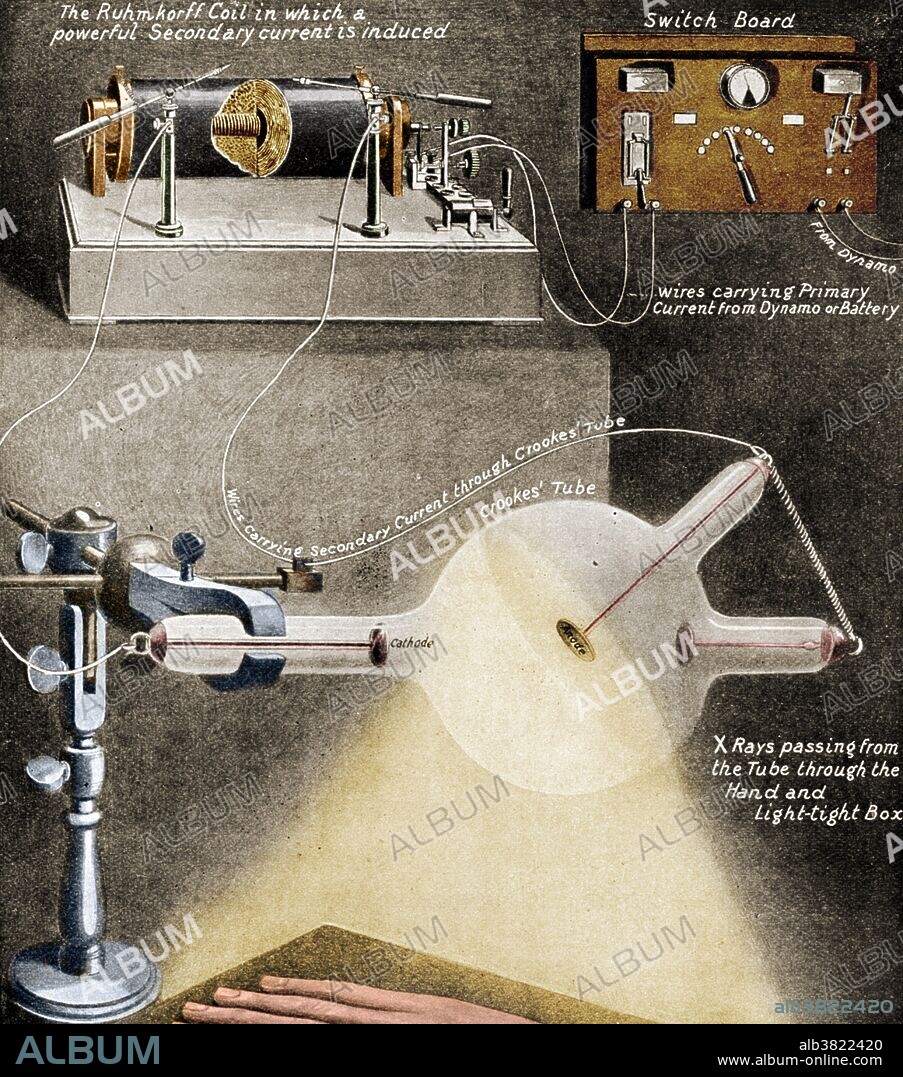alb3822420
Crookes Tube Used to X-Ray, 1912

|
Añadir a otro lightbox |
|
Añadir a otro lightbox |



¿Ya tienes cuenta? Iniciar sesión
¿No tienes cuenta? Regístrate
Compra esta imagen

Título:
Crookes Tube Used to X-Ray, 1912
Descripción:
Ver traducción automática
Crookes tube. A diagram showing the apparatus being used to X-ray a hand, 1912. Wilhelm Rontgen discovered X-rays using the Crookes tube in 1895. The Crookes tube was a forerunner to the modern cathode ray tube and television. Crookes tubes were used by British physicist Sir William Crookes from 1878 to investigate cathode rays. He found that the rays, which are actually beams of electrons, made glass fluoresce. Crookes also found that the cathode rays could be bent by applying a magnetic field. The discovery that cathode rays were charged led directly to J.J. Thompson's discovery of the electron in 1897.
Crédito:
Album / Science Source
Autorizaciones:
Modelo: No - Propiedad: No
¿Preguntas relacionadas con los derechos?
¿Preguntas relacionadas con los derechos?
Tamaño imagen:
3225 x 3658 px | 33.8 MB
Tamaño impresión:
27.3 x 31.0 cm | 10.8 x 12.2 in (300 dpi)
Palabras clave:
90S • ALEMAN • ARTE • AÑOS NOVENTA • CIENCIA • COLOR • COLOREADA • DECADA NOVENTA • DESCUBRIMIENTO • DIAGRAMA • DIBUJO • EQUIPAMIENTO • EQUIPO • ESPECTROSCOPIA • EUROPEO • FÍSICA (CIENCIA) • HISTORIA • HISTORICO • ILUSTRACION • INGLES • INSTRUMENTO CIENTIFICO • INVENCION • MANO • MAYOR • MEJORA • MEJORAR • OBRA DE ARTE • QUIMICA • RAYOS X • SIGLO XIX • SIGLO XX • VIDRIO
 Pinterest
Pinterest Twitter
Twitter Facebook
Facebook Copiar enlace
Copiar enlace Email
Email
